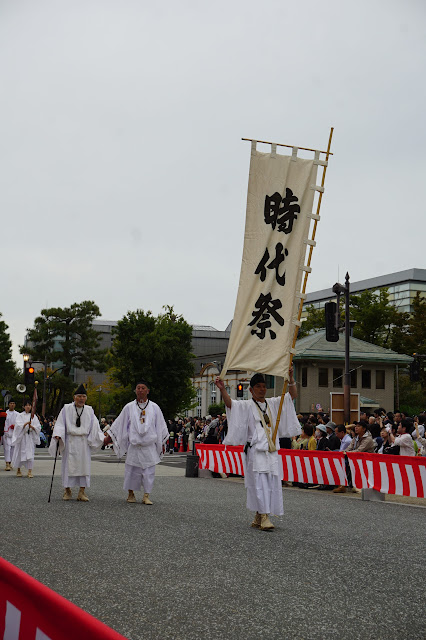時代祭は、都を京都に移した桓武天皇と、最後の京都の天皇、孝明天皇の魂を、神輿に乗せて行列とともに練り歩く。現在の京都市の様子を見るそう。で、平安神宮へ。
時代行列は2000人が参加する。
天皇家視点のお祭りなので、天皇家・朝廷・明治政府に貢献した人物たちの行列。だから、幕府側だった新選組は出ないのだそう。天誅組代表の吉村寅太郎氏は出ていたな。
時代考証がよくなされた衣装だそうで、ものすごくお金がかかっているとか。本物の馬や牛もいて、人を乗せていたり車を引いていたり。
面白かったです。安くない席ですが、よく見えるし分かるし、解説付きがおすすめ!
I had the chance to watch from a “Manabi (Learning) Seat,” a special seat equipped with a commentary service delivered via earphones! I was seated right in the front row, so I could see every part of the procession clearly! Having the commentary made it much easier to understand the procession, which was wonderful.
The Jidai Matsuri (Festival of Ages) involves carrying the spirits of Emperor Kanmu, who moved the capital to Kyoto, and Emperor Komei, the last emperor who lived Kyoto before the capital was moved to Tokyo, in a portable shrine as they’re paraded through the streets. The procession makes its way through present-day Kyoto and heads toward Heian Shrine.
The historical procession includes 2,000 participants. Since it’s a festival seen from the imperial family’s perspective, the parade features people who contributed to the imperial family, the court, and the Meiji government. That’s why the Shinsengumi, who sided with the shogunate, aren’t included. However, Torataro Yoshimura, the leader of the Tenchu-gumi, was in the procession.
It’s said that the costumes are based on extensive historical research and are very costly. There are even real horses and oxen, carrying people or pulling carts. It was fascinating to watch. Although the seat wasn’t cheap, it offered a great view and easy-to-understand commentary—highly recommended!













No comments:
Post a Comment